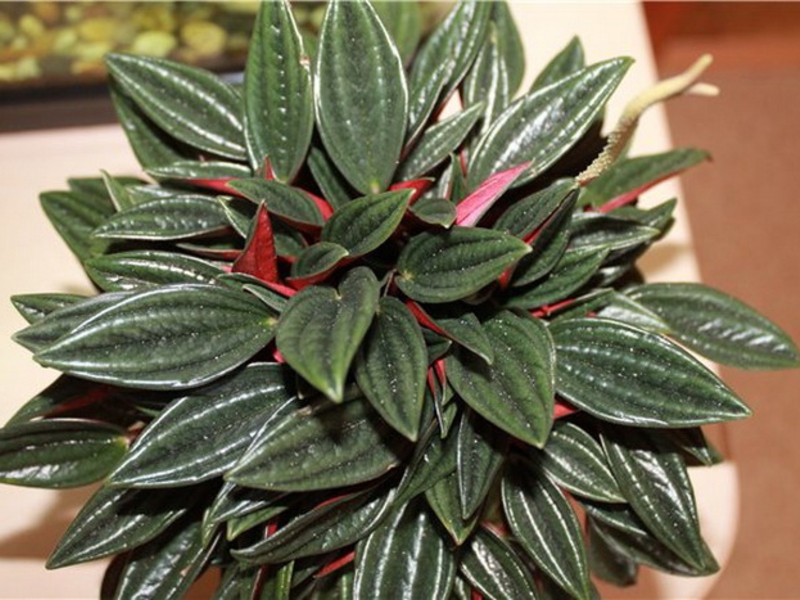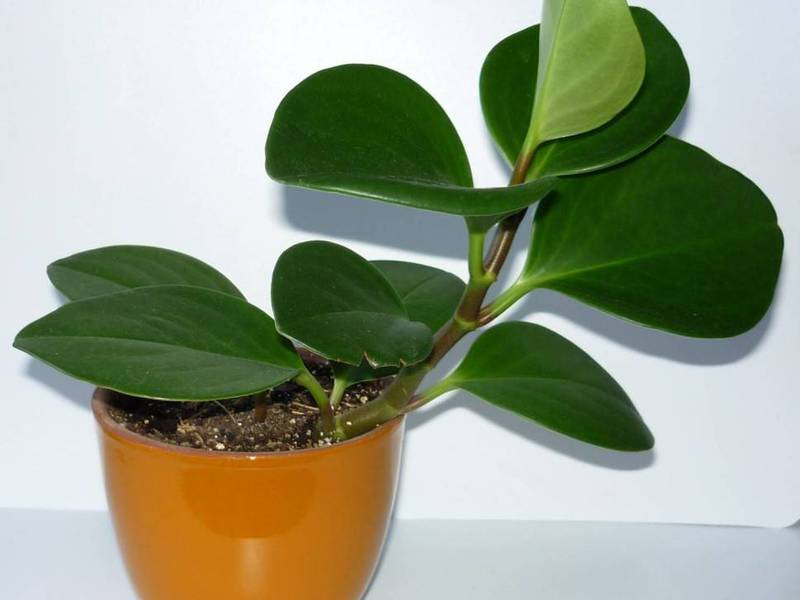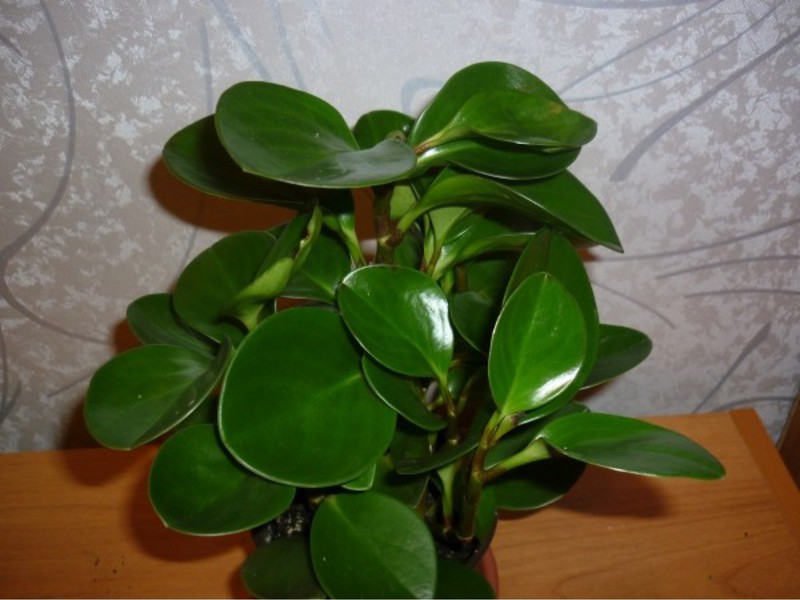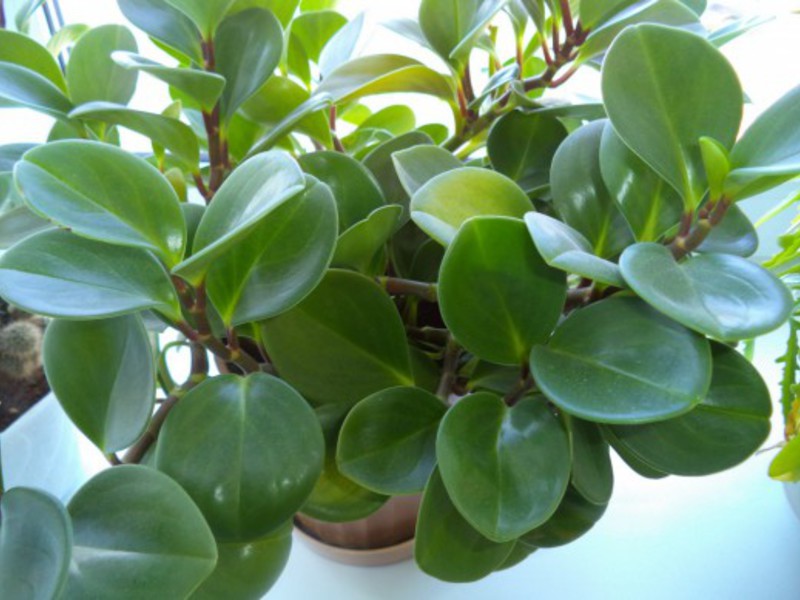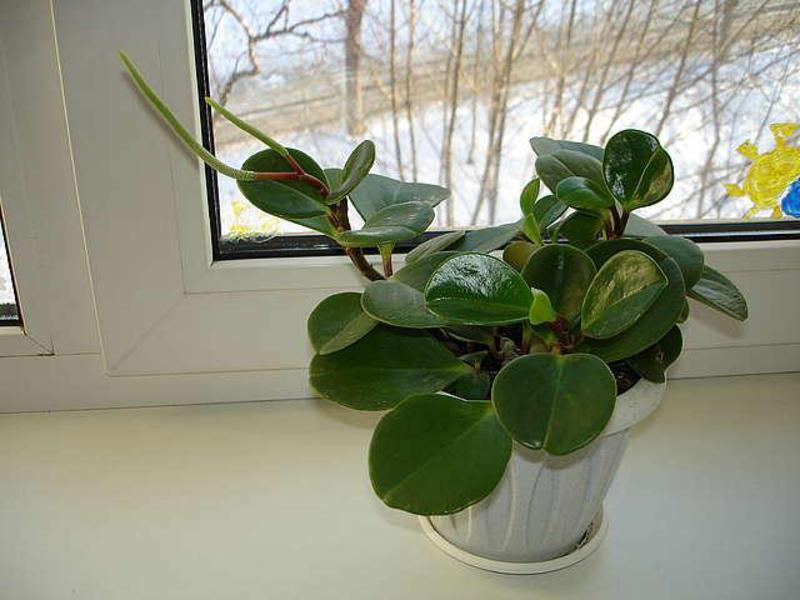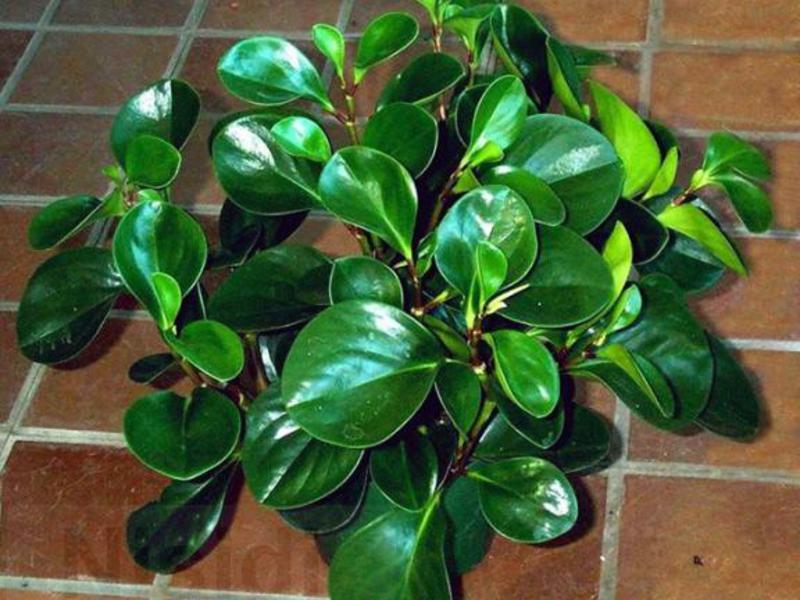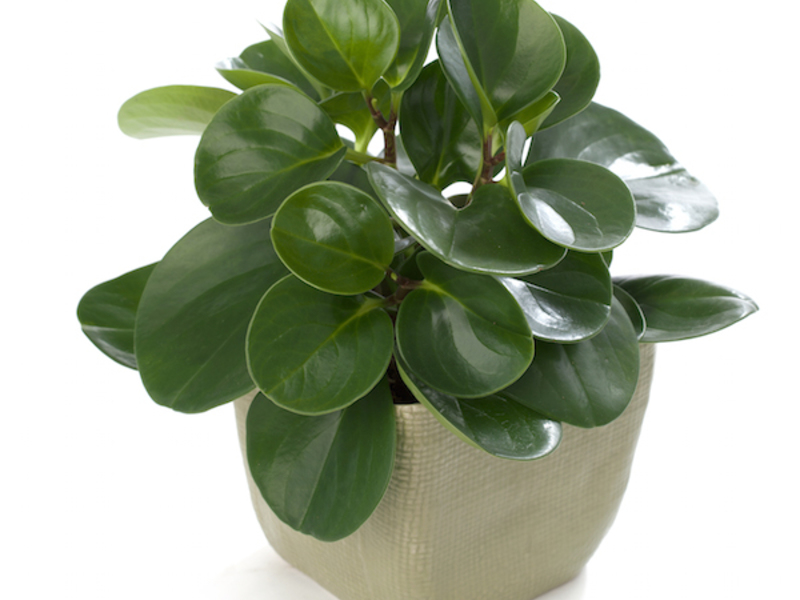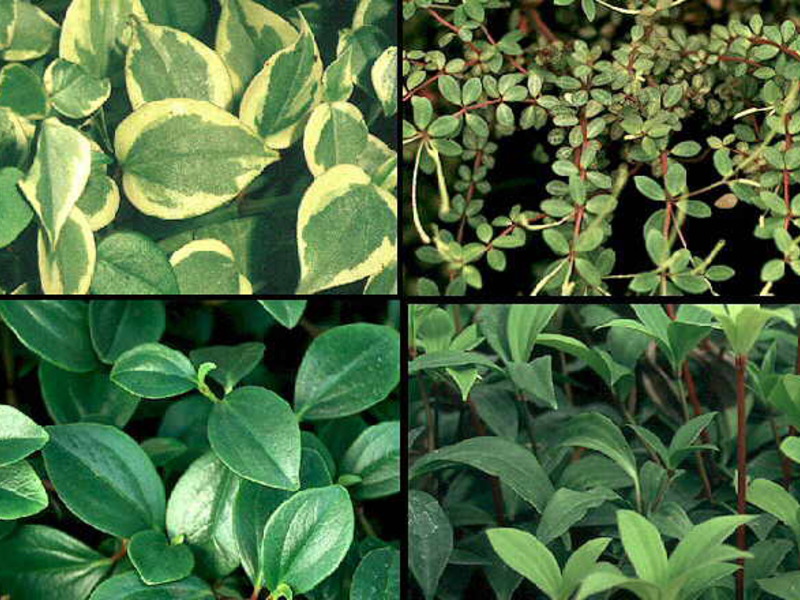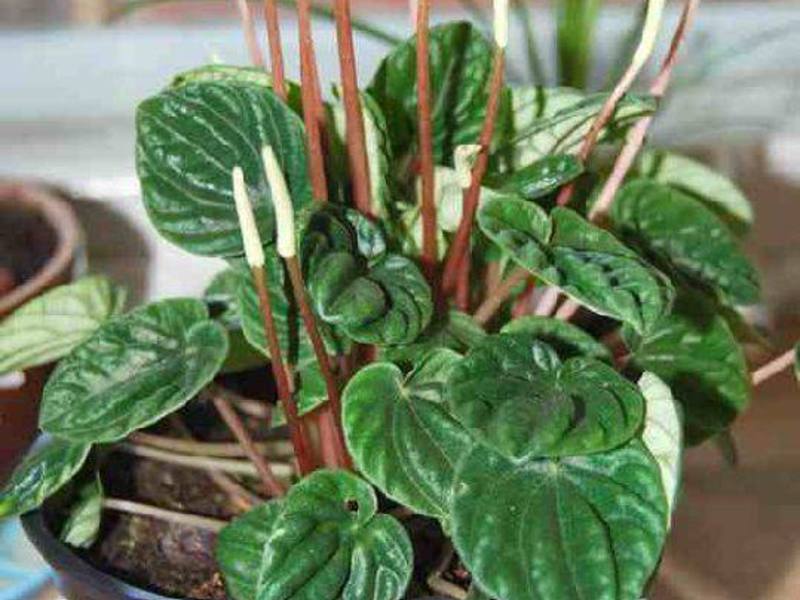The bizarre pereromiya plant is distinguished by luxurious leathery leaves and thick shoots. Its various types are of great interest among flower growers. Peperomia can be a shrub, subshrub, or ampelous plant. It can be used to decorate rooms and create flower arrangements. Most specimens are compact in size, so they fill the spaces between different plants. Peperomia is also characterized by unpretentiousness, so it is willingly grown at home.
Content
Peperomia: types, description, photos
An epiphytic plant native to the tropical regions of South America, where it can take the form of annual or perennial grasses and shrubs. A flower growing up to only 50 cm differs thick shoots and dense leavesthe surface of which is covered with a waxy coating. The color, size and shape of the leaves depends on the species, therefore it can be very diverse. You can find smooth, corrugated, fluffy, tender, fleshy, miniature, large, heart-shaped, lanceolate, rounded or oblong. The color of the leaves of peperomia ranges from green to golden with streaks, stripes and spots. The cylindrical inflorescences of the plant are inconspicuous and collected from small flowers.
The main types of peperomia
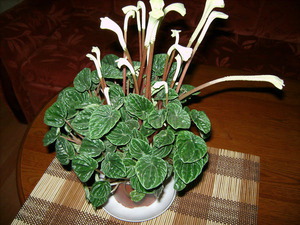 Peperomia is blunt-leaved. The upright plant belongs to herbaceous perennials. In nature, it grows both on the ground and in trees. Peperomia dull-leaved is characterized by dense, fleshy leaves, reaching a length of 8-12 cm, and a width of 4-5 cm. Egg-shaped leaves located on the shoots alternately. They narrow towards the base, and expand again towards the top. The color of the leaves of peperomia blunt-leaved depends on the plant variety. They are most often dark green, but can be gray-green, creamy, and milky white.
Peperomia is blunt-leaved. The upright plant belongs to herbaceous perennials. In nature, it grows both on the ground and in trees. Peperomia dull-leaved is characterized by dense, fleshy leaves, reaching a length of 8-12 cm, and a width of 4-5 cm. Egg-shaped leaves located on the shoots alternately. They narrow towards the base, and expand again towards the top. The color of the leaves of peperomia blunt-leaved depends on the plant variety. They are most often dark green, but can be gray-green, creamy, and milky white.
Wrinkled peperomia. A low plant native to Brazil. It grows only up to 10 cm and has petioled, green leaves that grow from the root. A distinctive feature of the leaves are brown veins, which are strongly convex on their underside and concave on the upper side. In the summer, a plant of this species blooms with spikelets of white color. Therefore, it is often grown not only as an ornamental deciduous plant, but also for flowers.
Peperomia silvery. Terrestrial or epiphytic perennial in nature grows in Brazil and Venezuela... Petiolate leaves of this species grow from the root. The petioles reaching a length of 10 cm have a red tint. Shiny, dense and fleshy leaves are distinguished by green veins, between which there are whitish stripes.
Peperomia is gray. A herbaceous dwarf shrub or perennial grows up to 1.5 m. Dense green leaves reach 5 cm in diameter. Both the leaves and shoots of the plant are densely covered with hairs. The leaf plate tapers slightly towards the top.
Peperomia is pleasant. A perennial, epiphytic plant native to the tropical forests of South America. The species is distinguished by small oval-shaped leaves.They are only up to 4 cm long and up to 1.5 cm wide. On the shoots covered with hairs, the leaves grow opposite, three or four at a time. The leaf plate is green on top and red on the bottom.
Peperomia creeping. An epiphytic perennial with recumbent, upright, or drooping shoots grows in the swampy forests of America. On its shoots, petiole leaves of a flattened-ovoid shape are alternately located. The species has several varieties, so the leaves may be green or variegated... Indoors it is grown as an ampelous plant.
Peperomia marble. Herbaceous, low, densely growing shrub is distinguished by leaves, the color of which is similar to marble. Brown veins run along the cordate-rounded green leaves.
Peperomia is multi-spotted. A herbaceous perennial growing in the mountain forests of South America, it has green-brown shoots and leaves growing from the root. Growing up to 20 cm in length, dark green, dense, shiny leaves are ovoid and covered with white veins. Representatives of this species are distinguished by rather long brown inflorescences.
Peperomia is reddish. The herbaceous perennial is considered an ornamental plant. Its red thin shoots are covered with small leaves. The oval leaf plate is green on top and red on the bottom.
Peperomia is clusiform. Herbaceous perennials are native to the tropical forests of Venezuela. Representatives of the species have sessile, petiolate, dense leavesthat grow on shoots alternately. Each leaf is 15 cm long and 8 cm wide. The dark green leaf plates have a reddish hue and a purple border. Their base is wedge-shaped, and the apex is obtuse.
Peperomia is velvety. Herbaceous perennials of this species are distinguished by dark red, upright, straight, pubescent stems, on which rounded leaves are located on short petioles. Depending on the variety, leaf plates can be bare or pubescent. From the base of the green leaves, there are 5-7 veins of light green color. At the ends of the branches and in the axils of the leaves, flowers are formed, which are spikelets 7 cm in size.
Peperomia: home care
Placing and caring for the plant does not involve anything complicated. The main thing is to take into account the peculiarities of the types of flower and follow some rules.
Lighting and air temperature
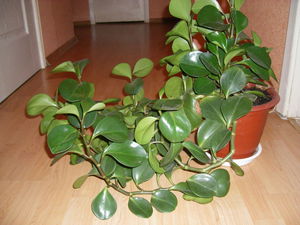 Among the types of peperomia, there are specimens with green and variegated leaves. Therefore, the place for the plant is chosen depending on their color. Green-leaved flowers love partial shade... Variegated species like brighter lighting, but without direct sunlight. With a lack of light, their foliage will begin to turn green, become uninteresting and ordinary.
Among the types of peperomia, there are specimens with green and variegated leaves. Therefore, the place for the plant is chosen depending on their color. Green-leaved flowers love partial shade... Variegated species like brighter lighting, but without direct sunlight. With a lack of light, their foliage will begin to turn green, become uninteresting and ordinary.
If variegated peperomia grows in the northern room, then it will need additional lighting. In rooms with south-facing windows, the plant is grown farther from the window. Western and eastern window sills are best suited for variegated flowers with greens.
Peperomia does not tolerate drafts, therefore, with open vents, it will not grow on balconies and in the garden. The best for her is considered temperature at 18-22C... If the plant will stand on the windowsill, then there should be no cracks in the windows.
Air humidity and watering
Humid air is not necessary for the plant. Peperomia will grow and develop even with sufficiently dry indoor air. But to get a luxurious plant, it is recommended to spray it regularly. This should be done as often as possible in hot weather and with the heating radiators on... At air humidity 50% the shrub will begin to develop more actively. But it is worth considering that peperomias with pubescent leaves react extremely negatively to spraying.
The plant does not require too much watering, but some rules must be followed:
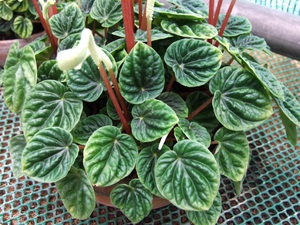 An abundant amount of peperomia water is required only during the period of active growth.
An abundant amount of peperomia water is required only during the period of active growth.- Watering should be carried out with settled water at room temperature.
- In autumn and winter, the intensity of watering is reduced, otherwise the roots may rot.
- Water stagnation in the soil should not be allowed, since peperomia is even more afraid of overmoistening than overdrying.
If the plant is poured for a long time, then its stem will begin to soften, blacken and leaves fall off. Withering leaves do not mean a lack of watering, but, on the contrary, about waterlogging of the soil. In this case, the flower must be left without watering for one or two weeks.
Transplant and fertilization
When caring for peperomia, transplanting it is often not required, since the root system of the flower is very fills containers slowly... Therefore, transplanting should be done only when the plant pot becomes too tight.
The new pot should be shallow and only 2-3 cm larger than the previous one. The composition of the soil for peperomia should include:
- garden land;
- humus;
- cleaned sand.
Expanded clay must be laid at the bottom of the pot.
A plant transplanted into a new earthen mixture is not fertilized at first. In the future, when caring for peperomia, you need to feed it twice a month with mineral fertilizers for indoor flowers in the spring, summer and autumn. In winter, feeding is done once a month.
Pests and diseases of peperomia
An unpretentious plant with proper care at home is practically not susceptible to diseases and pests... But sometimes, under unfavorable growing conditions, the flower can begin to prevail:
 The mealybug appears as a white fluffy mass in the leaf axils. The reason for its appearance can be a low temperature, drafts and overflow of the plant. At the initial stage, the pest is removed with a cotton swab dipped in an alcohol solution. With a large accumulation of mealy worm, the bushes need to be sprayed with special chemicals.
The mealybug appears as a white fluffy mass in the leaf axils. The reason for its appearance can be a low temperature, drafts and overflow of the plant. At the initial stage, the pest is removed with a cotton swab dipped in an alcohol solution. With a large accumulation of mealy worm, the bushes need to be sprayed with special chemicals.- Thrips on variegated plants are almost invisible, as they look like light dots on the leaves. These pests appear when peperomia is grown in hot rooms with low air humidity. It is necessary to fight them with the help of insecticidal preparations.
- A spider mite appears as a cobweb between leaves. The plant is affected by insects in rooms with too dry air. In the initial stages, the bushes can simply be rinsed with running water, wiped with a sponge with soapy water and sprayed regularly. With abundant infection, spraying with insecticidal agents is required.
Unique, elegant and unpretentious peperomias for many years remain the favorites of florists... The variety of their types allows you to bring your own flavor to the interior of the apartment. In addition, the plant produces phytocides, which can clean the indoor air from harmful bacteria. Therefore, it is recommended to place peperomia in children's rooms.
